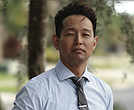RCH and the need to sustain local cultural consciousness
3/7/2024, 6 p.m.
At the March 3 “We Shall Gather at the Hospital” rally hosted by the Save Community Hospital Work Group, public historian, Dr. Carmen Foster reflected on the erasure of local stories due to the Richmond area’s shifting sociocultural landscape. Her passionate testimony inspires contemplation on what the 1932 Richmond Community Hospital site represents within Richmond and the American South’s sociocultural location.
As transplants flood the Richmond area for reasons including job and educational opportunities, lower living costs, and a slower pace, there arises both a fresh, energetic demand for a more cosmopolitan experience along with a marked disregard for the local history and culture. That the African Burial Ground needs signs prohibiting dog-walking attests to this obliviousness or even, at worst, carelessness. Richmond joins the U.S. at large in a shift toward cultural homogeneity, partly characterized by greater residential transience, increased disassociation from families of origin and declining, generic architectural standards. In the Mid-Atlantic, the D.C. overflow especially stands to absorb the particularity of local cultures into a decontextualized blob only glancing at the past.
From this vantage point, no wonder The Steinbridge Group, a New York and Philadelphia based firm, plans to lay the wrecking ball to a locally significant site, only to replace it with new apartments and an historical marker. When Dr. Hakim Lucas, Virginia Union University’s president, contextualizes the 1932 edifice’s demolition within the framework of “shaping the Commonwealth’s future,” it seems to point to a larger, deculturing cultural phenomenon.
In Southern society, historically undergirded less by ambitious developers and more by kinship ties, neighborly bonds, and community unity, the past, present and future exist more simultaneously. In this context, disconnectedness from heritage and a specific sense of place signifies the beginning of cultural erosion and even alienation from our souls.
As someone with local roots stemming back to the Jim Crow era in Richmond City proper and nearly 250 years to Charles City County’s oldest existing records, I contend that the investment in historic preservation remains at once a present and future assignment. Closer still, I just learned that my late mother was born at the old Richmond Community Hospital. Upholding the 1932 site represents more than defending a stack of bricks. It represents resistance to modern society’s consuming fire of homogenization and a commitment to outwardly sustain monuments to our ancestral and cultural legacies.
REV. JABRIEL M. HASAN
Sandston







